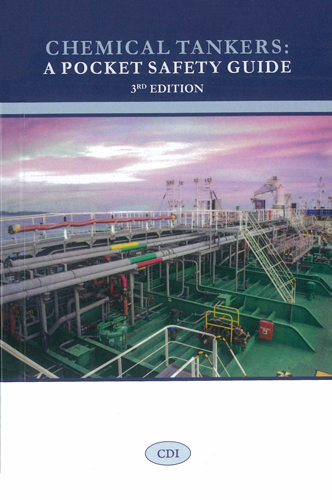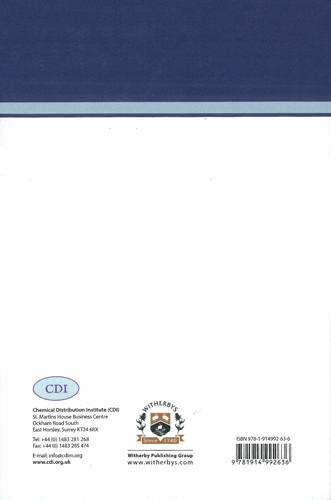Chemical Tankers – A Pocket Safety Guide/Химические танкеры - карманный справочник по безопасности
Книга на английском языке
This book explores best practices on tankers carrying chemical and similar hazardous products and provides a good introduction to safe tanker practice, terminology and standards. It is not a detailed operational guide, but is aimed as basic safety information for seafarers of all ranks and positions. It is suitable for seafarers who may be rejoining a tanker after leave for example, or for a person with little or no experience on tankers, in particular cadets and new ratings. Ideally, it should be read to aid the familiarisation process whenever you join a tanker.
Contents
Introduction
Safety-the Main Message
About this Book
Chapter 1-The Ships
1.1 General Information
1.2 Cargo Categories
1.3 Ship Types
1.4 Cargo Tank Types
Chapter 2 - Safety Systems
2.1 Risk Assessments
2.2 Permit to Work (PTW) Systems
2.3 Toolbox Talk
Chapter 3 - Personal Safety
3.1 Induction and Familiarisation
3.2 The Safety Officer
3.3 Slips, Trips and Falls
3.4 The Effects of Slips, Trips and Falls
3.5 Preventing Slips,Trips and Falls
3.6 Life on Board
Chapter 4 - Manual Handling
4.1 Manual Handling
4.1.1 Manual Handling - Assessment
4.1.2 Manual Handling - Best Practice
Chapter 5 - Personal Protective Equipment
5.1 Head Protection
5.2 Eye and Face Protection
5.3 Respiratory Protective Equipment
5.4 Ear Protection
5.5 Body Protection
5.6 Hand and Finger Protection
5.7 Foot Protection
5.8 Fall Protection
5.9 Buoyancy Aids
Chapter 6 - Equipment Hazards
6.1 Fixed Equipment
6.2 Portable Tools and Equipment
6.3 Hot Work
6.4 Laundry Equipment
6.5 Use of Paints and Working Chemicals
Chapter 7 - Fire Hazards and Extinguishing Fires
7.1 Fire Hazards
7.2 Discovering a Fire
7.3 Classes of Fire
7.4 Types of Fire Extinguisher
7.5 Using a Fire Extinguisher
Chapter 8 - Chemical Cargoes and Vapours
8.1 Safe Working Limits
8.2 Safety Data Sheets (SDS)
8.3 Chemical Flazards
8.4 Case Study: 'Stolt Groenland'
8.5 Corrosive Cargoes
8.6 Toxic and Poisonous Cargoes
8.7 Flammable Cargoes
8.8 Reactive Cargoes
8.9 Vegetable and Animal Oils
8.10 Hydrogen Sulphide (H2S)
8.10.1 Effects of H2S
8.11 Benzene (C6H6)
8.12 Carbon Monoxide (CO)
8.13 Nitrogen (N2)
Chapter 9 - Enclosed Spaces
9.1 What is an Enclosed Space?
9.2 Why are Enclosed Spaces Dangerous?
9.3 Entering an Enclosed Space
9.4 Duties of the Attendant
9.5 Duties of the Responsible Person/Competent Person
9.6 Communication
9.7 Breathing Apparatus
9.8 Rescue Operations
9.9 Specialised Areas
9.10 Sampling, Gauging and Tank Measurement
9.11 Gas Detection Equipment
9.12 Testing Hazardous Atmospheres
Chapter 10 - Operational Hazards
10.1 Cargo Operations
10.2 Mooring Operations
10.3 Towing Operations
10.4 Anchoring Operations
10.5 Safe Access
10.6 Static Electricity
Chapter 11 - Lifting Operations
11.1 Lifting Equipment
11.2 Risk Assessment
11.3 Safety Rules for Lifting Operations
11.4 Load Security
11.5 Cranes and Winches
11.6 Gantry Cranes
11.7 Hand Signals for Lifting Operations
Chapter 12- Inspections
12.1 Safety Inspections
Chapter 13 - Drills and Emergencies
13.1 Drills
13.2 Emergency Response
13.3 Actions in the Event of Pollution
13.4 Shipboard Marine Pollution Emergency Plan (SMPEP)
Chapter 14 - Cyber Security
14.1 Cyber Risk Management
14.2 Types of Cyber Attack
14.3 Protection from Cyber Attacks
14.4 Identifying a Cyber Security Attack
14.5 Passwords
Chapter 15 - Health and Wellbeing
15.1 Healthy Eating
15.2 Fitness and Exercise
15.3 Heat Stress
15.3.1 Effects of Heat Stress
15.4 Mental Health
15.4.1 Ways to Improve Your Mental Health
15.5 Bullying and Discrimination
Glossary
Contents




